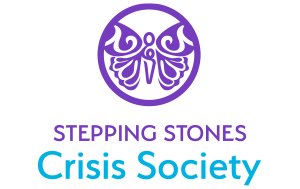
The Cycle of Abuse: The 4 stages of violence
Domestic violence manifests in different ways In the 1970s, psychologist Lenore E. Walker first documented the four main stages in which violence occurs in the household and named them “The Cycle of Abuse”.
It is important to note that domestic violence is not exclusive to romantic relationships. It is considered domestic violence when the individuals involved have an intimate relationship, are dependent, and share a living space. This means that domestic violence can also occur between parents and their sons or daughters, grandparents, siblings, friends, and even roommates. When discussing domestic violence, it is categorized as such when it occurs between adults. Anything involving a victim under the age of 18 is considered child abuse.
Once a violent incident has occurred, the cycle of abuse begins to appear in four stages:
- Tension Building
- Violent Incident
- Reconciliation
- Calm
Keep in mind that this is a 50-year-old concept.
While these are the main stages and the most common pattern, victims testify that every incident is different. They may experience these stages in a different order, varying lengths, skip a phase, jump from different types of abuse (i.e., from physical to emotional violence), and sometimes repeat themselves.
The cycle of abuse was most frequently documented by Lenore Walker in relationships where the man was the abuser and the woman was the victim. However, we now know that although this is the most common relationship where domestic violence occurs, it can present itself in different types of relationships.
Understanding the cycle of abuse helps victims identify patterns so they can seek help or form an exit strategy. It should never lead to victim blaming or shaming with statements such as “you should have seen it coming.” Violence presents itself in different ways, sometimes without warning.
Although The Cycle of Abuse refers mostly to physical violence, there are many other forms of abuse such as:
- Emotional abuse
- Sexual abuse
- Stalking
- Intimidation
- Manipulation

Tension Building
This is the anxiety phase. During this time, the abuser starts to feel like they’re losing control and will become increasingly unstable and aggressive. They will become more irritable, prone to emotional outbursts, impatient, and short-tempered.
Victims will commonly detect that the abuser’s negative and destructive feelings start ramping up. The victim will often feel like they are “walking on eggshells” and will try to avoid the abuser’s rage, even going to great lengths to do so.
Other individuals trapped in a violent relationship may try to provoke an incident (next phase) to alleviate the tension because it is so unbearable.
Violent Incident (Explosion)
After the tension has built up, something will push the abuser over the edge and culminate in one or multiple abusive incidents. Most abusers crave power and control in other aspects of their lives where they don’t have them, be it within themselves, or externally at work, financially, with friends, sports, social groups, or family. The way they look to get a sense of control back in their lives is by being abusive in a relationship where they feel powerful and under control.
A violent or abusive incident can take the form of:
- Outbursts
- Threats
- Breaking things
- Forced isolation
- Physical violence
- Sexual violence
- Shaming and blaming
- Humiliation
- Emotional abandonment
- Financial abuse
- Manipulation

Reconciliation (Honeymoon phase)
After the incident, the abuser may feel guilt about their actions and try to compensate by apologizing, showering the victim with affection, gifts, and promises that it will never happen again.
This may make the victim feel closer to the abuser, and out of care for them, they may be inclined to believe what they are saying. This reconciliation stage often keeps the relationship together and enters it into a honeymoon stage.
Calm
The final phase in the cycle of abuse is Calm, a stage where violence has not yet erupted again, but the abuser begins to find ways to justify their actions. They may attribute blame to external factors such as alcohol, stress, or work. Additionally, they start to minimize their actions by thinking “it wasn’t that bad” or “you’re just exaggerating”.
The victim may also seek reasons to minimize the incident, attempting to justify to themselves that it wasn’t as severe as it seemed. However, this only creates a false sense of security, with almost complete certainty that the cycle will begin again.
The cycle of abuse repeats itself
The cycle often repeats itself in different ways, with varying levels of severity, the number of incidents, and the lengths of time in the reconciliation and calm phases. In some cases, the calm phase may last a long time, leading the victim to believe that the incidents were only isolated circumstances and not a pattern of behavior… until the calm stops, and tension starts building once again.
For those who have been in the cycle of violence for many years, the Honeymoon phase and the Calm phase may not even happen, cycling back immediately from explosion to tension building.
Stopping the cycle of abuse
Putting an end to abuse isn’t always as simple as just walking away, like a lot of people who have never been in that situation tend to say. The victim will be fearful for their own safety, their pets’, children’s, or might feel ashamed or judged by others for leaving, because relationships give a different image to those on the outside. Other times the abuser will have control over key financial assets, the car, digital accounts, or more. See our blog post Online Safety for Women Survivors of Abuse for more information.
Feeling trapped in the situation due to lack of resources is also a valid concern. Abusive partners often exploit these circumstances to maintain control over you. In cases of emotional abuse, the victim might not even recognize that they’re caught in an abusive cycle yet.
However, leaving an abusive relationship is possible, and it might begin with identifying the toxic behaviors and setting boundaries on what you will not tolerate.
Consider the following strategies to help you break free from the cycle of abuse:
Sharing with someone you trust
Most people who seek help in cases of abuse are likely to turn to a person close to them before reaching out to the police or other organizations. Opening up to a trusted friend or family member can shed light on patterns of behavior that indicate abuse. They offer a safe space to turn to during tense or violent episodes. In many cases, a trusted person has been the key to the victim’s successful escape from a violent home, providing emotional support, helping the victim strategize, or even acting as an accomplice.
Seeking professional support
At Stepping Stones Crisis Society, you can always find help if you are considering leaving an abusive household in Northern Alberta, particularly in the Cold Lake and Bonnyville areas. You can reach our helpline at 780-594-3353 or contact us at
ou******@St*******************.ca
. We offer a emergency residential shelter for women, with or without their children, and their family pets (dog or cat).
If you find this article useful, or want to support our cause, please donate here. Every dollar counts and our clients will greatly appreciate it.


